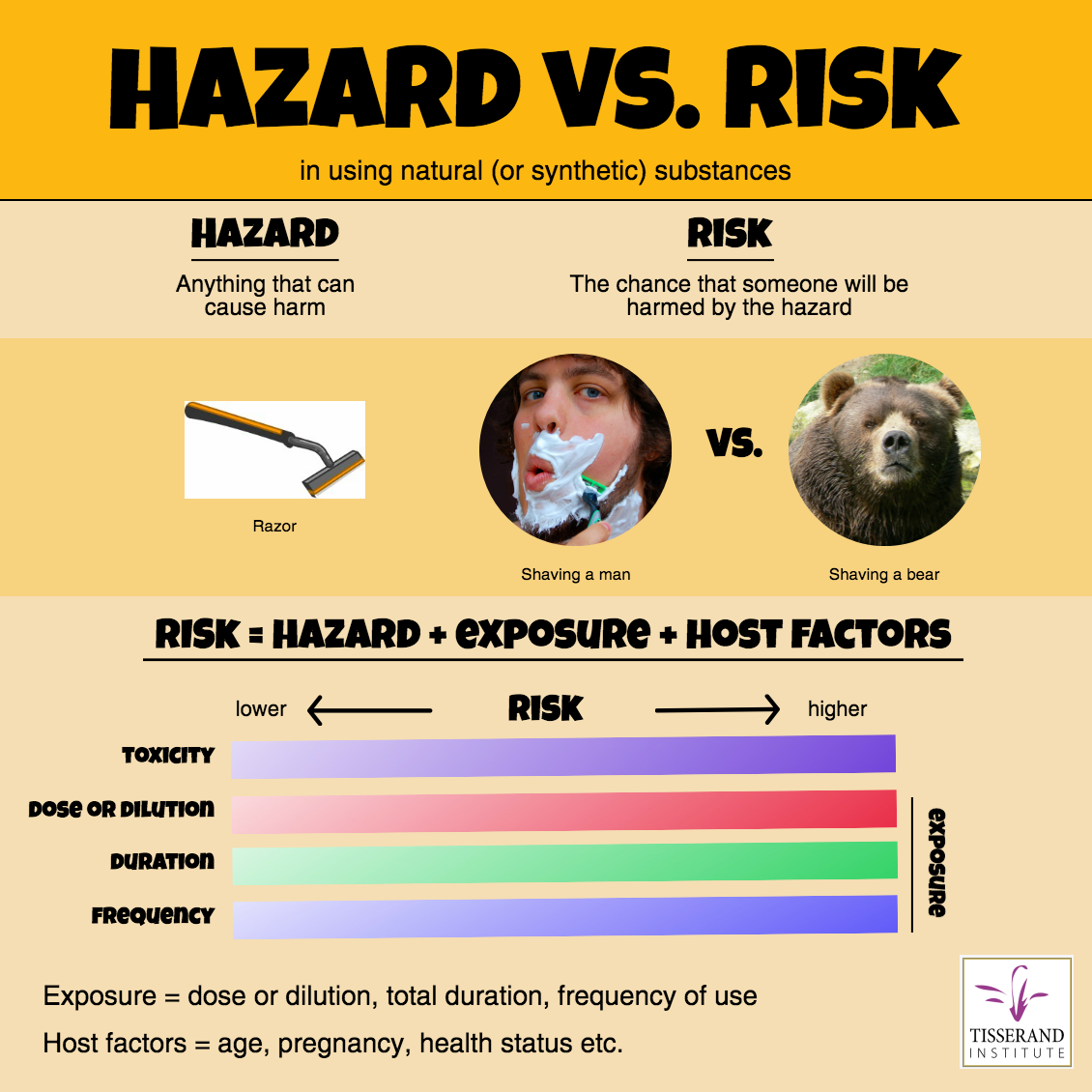What is the difference between hazard and risk?
We exist in a chemical soup. We eat, breathe and drink chemicals. We are made of chemicals and so is everything else. Especially in this industrial age, it’s important for us to identify significant risks and to either eliminate them or reduce them to the point of being negligible. This also applies to natural substances, which of course also consist of chemicals. In general, natural substances may be safer – that’s open to debate – but “safer” is not safe, it’s just a relative term.
In toxicology, it’s important to understand the difference between hazard and risk: “hazard” is simply potential risk. How much risk there actually is depends on other factors, such as the toxicity of the substance, how much of it you are exposed to, and how old you are. If you’re 3 years old, the risk will be different to if you’re 30 years old. “Frequency” simply means how many times per day, and “duration” means how much time elapsed between first and last use, which could be hours or years.
For essential oils, toxicity may include irritants, allergens, neurotoxins, fetotoxins, carcinogens etc. Within the essential oil community, we have a tendency for double standards. Some of us are intolerant of any synthetic chemicals with any of the above stated hazards, but when it comes to essential oils we have faith that the product we are using is harmless because it’s natural.
To a degree this makes sense – some essential oils do contain anti-carcinogenic constituents that counter the effect of the carcinogenic constituents they also contain; but only in some oils. To use an extreme example of toxicity, natural Bitter Almond oil contains about 3% hydrocyanic acid (cyanide), and if you drink an ounce of the oil it will kill you – the 97% of benzaldehyde has no protective effect. (You could not actually drink unrectified Bitter Almond oil – it has been banned for the last 150 years because of its toxicity.) And so it makes sense to set safety guidelines based on the totality of constituents, and to include any known human toxic effects.
Skin reactions are less predictable. There are safe levels for oils like Oregano (skin irritant, 1%) and Lemongrass (skin allergen, 0.7%). If you use more than those levels you might not experience an adverse reaction, but the risk increases significantly, also depending on frequency etc. We have seen low-risk oils causing allergic reactions simply because of prolonged exposure to high levels.


Thank you for continuing to educate us!